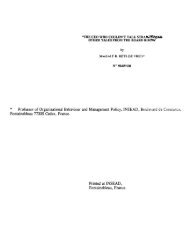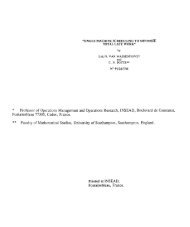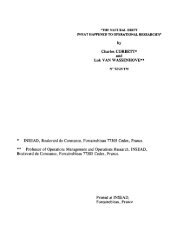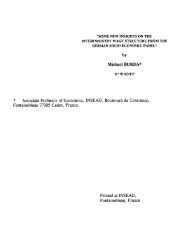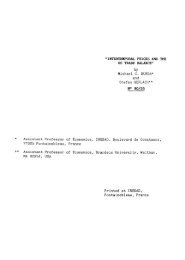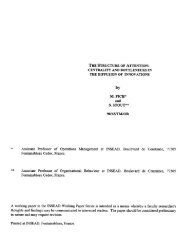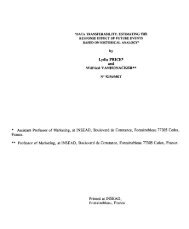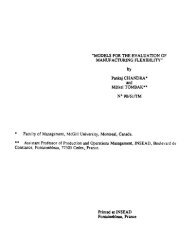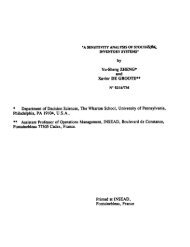* Assistant Professor of Operations Management at INSEAD ...
* Assistant Professor of Operations Management at INSEAD ...
* Assistant Professor of Operations Management at INSEAD ...
You also want an ePaper? Increase the reach of your titles
YUMPU automatically turns print PDFs into web optimized ePapers that Google loves.
the two points. By symmetry, everything we have said about firm 1 is true<br />
for firm 2 as well.<br />
We have thus verified the conditions for the generalized existence theorem<br />
(Proposition 7.4. Harker and Pang 1990) and can conclude th<strong>at</strong> an<br />
equilibrium to the game with two customer groups exists.<br />
Furthermore, Proposition 7.3. in Harker and Pang (1990) describes the<br />
equivalent vari<strong>at</strong>ional inequality problem associ<strong>at</strong>ed with our equilibrium<br />
problem. Strict concavity <strong>of</strong> U E (U1 , . , U N)T guarantees th<strong>at</strong> the function<br />
F in the vari<strong>at</strong>ional inequality is strictly monotone. Thus, Proposition 3.2.<br />
in Harker and Pang (1990) tells us th<strong>at</strong> there is <strong>at</strong> most one solution to the<br />
vari<strong>at</strong>ional inequality (and therefore <strong>at</strong> most one equilibrium). We have now<br />
established existence <strong>of</strong> a unique equilibrium, which must be symmetric by<br />
the symmetry <strong>of</strong> the firms. o<br />
A.2 Pro<strong>of</strong> <strong>of</strong> Proposition 2<br />
First, I show th<strong>at</strong> the full inform<strong>at</strong>ion equilibrium is obtained if all customers<br />
tell the truth. This follows from<br />
E [qn(,-,01 + 4 _ +<br />
An An mn 7 m„ z<br />
= 1147:<br />
= pn,<br />
— An P", (An)<br />
where the second equality follows from the expected value <strong>of</strong> the exponential<br />
distribution, and the third equality holds because A n , B implement p7„, which<br />
is shown in Theorem 3.2 in Mendelson and Wha.ng (1990).<br />
We now show th<strong>at</strong> the proposed contract is incentive-comp<strong>at</strong>ible. The con-<br />
19



